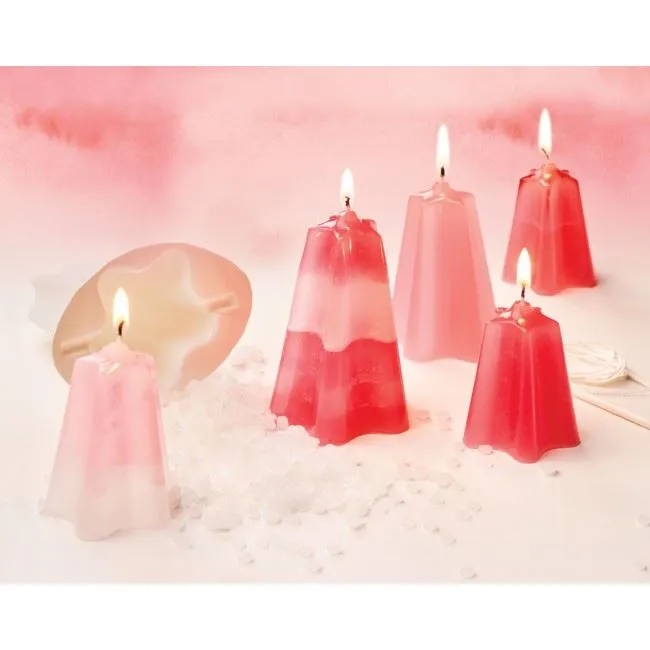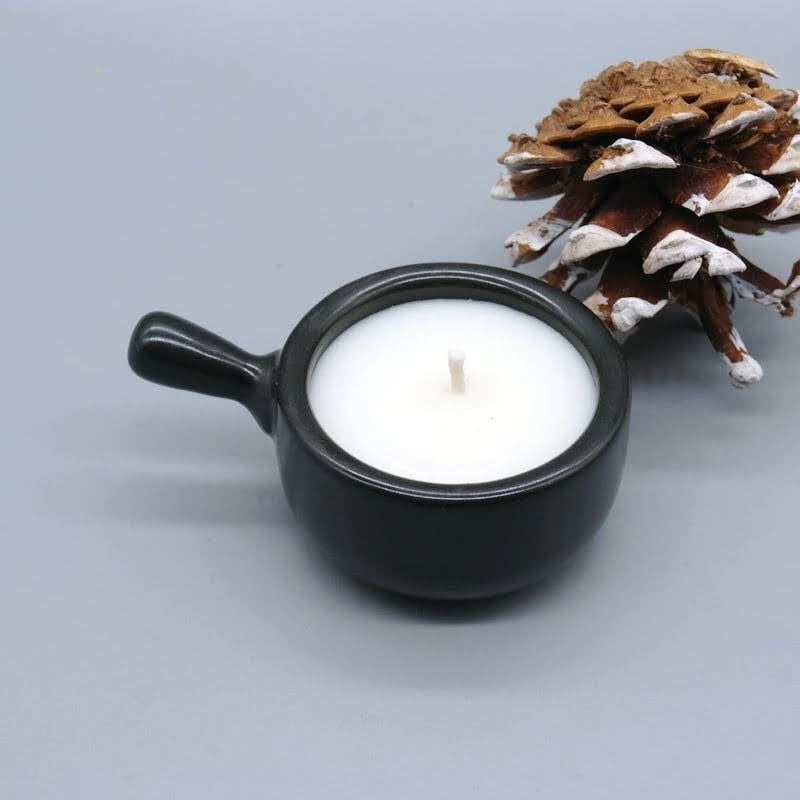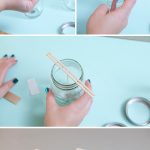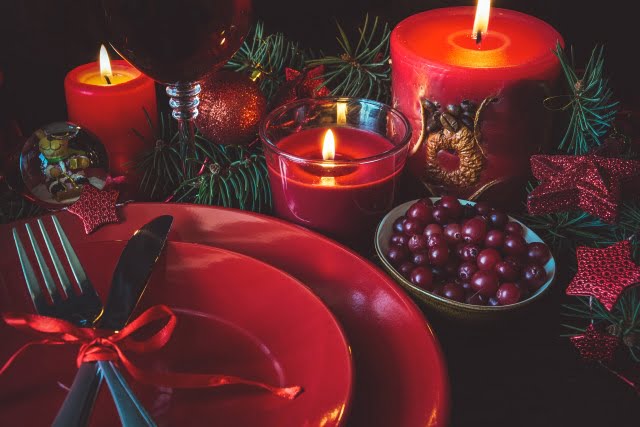Are you interested in trying your hand at candle making? Look no further. In this article, we will provide you with valuable tips for making beeswax candles. Beeswax candles are not only beautiful and aromatic, but they also offer a range of benefits over traditional paraffin wax candles. We will also take a brief look at the history of beeswax candles and why they have remained popular throughout the ages.
In the world of candle making, beeswax has long been prized for its natural beauty, clean-burning properties, and subtle honey scent. It has been used for centuries to create candles that are both functional and decorative. From ancient rituals to modern artisanal crafts, beeswax candles continue to hold a special place in the hearts of candle enthusiasts. Whether you are a seasoned chandler or just starting out, understanding the nuances of beeswax can greatly improve your candle-making skills.
Beyond their aesthetic appeal, beeswax candles have several advantages over other types of wax. Not only do they burn cleaner and longer than paraffin wax candles, but they also release negative ions when burned, which can help purify the air and promote a sense of well-being.
With the right knowledge and techniques, you can create your own unique beeswax candles that embody these qualities while adding a personal touch to any space. So let’s dive into the fascinating world of beeswax candle making.
Choosing the Right Beeswax
Different Grades of Beeswax and Their Uses
When it comes to choosing the right beeswax for your candle making, it’s important to understand the different grades available and their respective uses. The highest quality beeswax is typically labeled as “pure” or “filtered,” which means it has been minimally processed and retains its natural aroma and color. This type of beeswax is ideal for creating candles with a subtle honey-like scent and a warm, golden hue.
On the other hand, “cosmetic grade” beeswax is often bleached and may contain additives, making it better suited for skincare products rather than candles. It’s always best to opt for high-quality, pure beeswax to ensure the best results in your candle making.
Where to Purchase High-Quality Beeswax
One of the key factors in creating beautiful beeswax candles is starting with high-quality raw materials. When looking for where to purchase the right beeswax, consider sourcing from local beekeepers or apiaries who can provide raw or filtered beeswax directly. Alternatively, many craft stores and online suppliers offer a range of high-quality beeswax options suitable for candle making.
Be sure to read reviews and check the purity and sourcing information before making a purchase. In addition, purchasing in bulk can often result in cost savings, especially if you plan on making candles regularly.
Tips for Making Beeswax Candles
Before starting your candle-making journey with beeswax, it’s important to research and understand the different grades of beeswax available and their appropriate uses. By choosing high-quality, pure beeswax from reputable sources, you can ensure that your candles will burn cleanly and emit a natural honey scent.
Whether you decide to source locally or purchase online, be sure to read reviews and ask questions about the purity of the beeswax before making a purchase. With the right raw materials in hand, you’ll be well on your way to creating beautiful, sustainable candles that you can enjoy or share with others.
Essential Tools and Equipment
Making beeswax candles requires a few essential tools and equipment to ensure a safe and successful candle-making experience. Here are the necessary items you will need to get started:
Double Boiler or Wax Melter
To properly melt beeswax without scorching it, a double boiler or wax melter is essential. A double boiler consists of two pots, with the smaller pot sitting inside the larger one filled with water. This indirect heat prevents the beeswax from reaching high temperatures too quickly, which can affect its quality. Wax melters are designed specifically for melting wax and may offer more precise temperature control.
Thermometer
A thermometer is crucial for monitoring the temperature of the beeswax while it melts. It ensures that the wax doesn’t overheat, which can lead to discoloration and affect its burning properties. A candy or candle-making thermometer works best for this purpose.
Molds or Containers
You’ll need molds or containers to shape and hold your beeswax candles as they cool and solidify. There are various options available, including silicone molds, metal molds, glass jars, and tin containers. Be sure to choose molds that are specifically designed for use with beeswax.
In addition to these essential items, other tools such as a stirring utensil, scale for measuring beeswax and fragrance oils, and a work surface protected from spills should also be on hand when making beeswax candles. By having the right tools and equipment at your disposal, you can create beautiful and high-quality candles that you can enjoy or share with others.
Preparing the Beeswax
When it comes to making beeswax candles, properly preparing the beeswax is a crucial step in ensuring the quality and longevity of the final product. Here are some key tips for preparing beeswax for candle making:
- Begin by obtaining high-quality, pure beeswax from a reputable source. Look for local beekeepers or specialty stores that carry top-grade beeswax.
- Use a double boiler to melt the beeswax gently and evenly. Avoid direct heat, as it can scorch the wax and affect its fragrance and color.
- Consider filtering the melted beeswax through cheesecloth or a fine mesh sieve to remove any impurities or debris that may be present.
It’s essential to pay attention to detail when handling and preparing the beeswax, as any contaminants or uneven melting can impact the overall quality of the finished candles.
Once the beeswax is melted and free of impurities, you can proceed with adding fragrance and color if desired, before moving on to choosing the right wicks and pouring the candles. Taking these preparatory steps seriously will help ensure that your homemade beeswax candles turn out beautifully and are safe to use.
Adding Fragrance and Color
When it comes to making beeswax candles, adding fragrance and color can elevate the experience and make your candles even more enjoyable. Using essential oils and natural dyes can enhance the ambiance of any space while also providing the benefits of aromatherapy. When choosing fragrances and colors for your beeswax candles, it’s important to consider the quality of the ingredients as well as how they interact with the beeswax.
One important tip for making beeswax candles is to select high-quality essential oils that are specifically designed for candle making. Opting for pure, high-grade essential oils will ensure a strong and long-lasting scent in your candles. It’s also crucial to consider how different scents complement or overpower each other, so careful blending may be necessary to achieve the desired fragrance profile in your candles.
Similarly, when it comes to adding color to beeswax candles, using natural dyes is highly recommended. Natural dyes not only create beautiful and unique hues but also contribute to a more eco-friendly candle-making process. Be mindful of the amount of dye you use, as adding too much can affect the burning properties of the candle. Experimenting with different natural dyes and their concentrations can help you achieve the perfect color for your beeswax candles.
Incorporating fragrance and color into your beeswax candles offers endless opportunities for creativity and personalization. However, it’s important to avoid common mistakes when adding these elements. Overloading a candle with fragrance or dye can negatively impact its burn time and overall performance. By following these tips and experimenting with different combinations, you can create beautifully scented and colored beeswax candles that delight the senses.
Choosing the Right Wicks
When it comes to making beeswax candles, choosing the right wick is crucial for ensuring a clean and even burn. There are different types of wicks available, each with its own unique characteristics and burning properties. It’s essential to understand the impact that wicks can have on the performance of your candles in order to make an informed decision.
One important factor to consider when selecting a wick is the size of the candle. Larger diameter candles will require larger wicks to provide an even burn, while smaller candles will need smaller wicks. Choosing the wrong size can result in uneven burning, tunneling, or sooting, which can affect both the appearance and performance of your candles.
Another consideration when choosing wicks for beeswax candles is whether they are made from natural materials. Beeswax is a natural substance, so it makes sense to use wicks that are also natural and free from harmful chemicals. Look for cotton or hemp wicks that are lead-free and specifically designed for beeswax candles.
It’s also important to properly prime your wicks before using them in beeswax candles. Priming helps the wick absorb the melted wax more effectively and promotes a more consistent burn. This can be done by dipping the wick in melted beeswax or using a specialized wick primer solution before placing it in the candle mold or container.
| Wick Type | Recommended Candle Size |
|---|---|
| Cotton | Small to medium-sized candles |
| Hemp | Medium to large-sized candles |
Pouring and Setting the Candles
Once you have prepared your beeswax, added fragrance and color, and chosen the right wicks, it’s time to pour and set your candles. Here are some tips for ensuring a successful final step in the candle-making process:
1. Prepare your workspace: Before pouring the beeswax into molds or containers, make sure your work area is clean and free of any clutter. This will help prevent any accidents or spills as you pour the hot wax.
2. Pouring the wax: Slowly and carefully pour the melted beeswax into your chosen molds or containers. It’s important to do this slowly to avoid air bubbles forming in your candles.
3. Setting the candles: Once the wax has been poured, allow it to cool and set properly. This process can take several hours, so be patient and resist the urge to move or touch the candles before they are fully hardened.
4. Preventing imperfections: To ensure a smooth finish on your candles, try placing them in a warm oven (at around 150°F) for a few minutes after they have set. This can help eliminate any imperfections on the surface of the candle.
Remember that making beeswax candles is a fun and rewarding process but requires patience and attention to detail during every step, including pouring and setting the candles. By following these tips, you can create beautiful handmade beeswax candles that you can enjoy or give as gifts to friends and family.
Troubleshooting Common Issues
Making beeswax candles can be a fun and rewarding hobby, but it’s important to be prepared for the occasional hiccup along the way. Common issues can arise during the candle-making process, but with some troubleshooting techniques, these problems can be easily addressed.
One common issue that many beginners encounter is uneven burning or tunneling in their beeswax candles. This occurs when the wick doesn’t burn all the way to the edges of the candle, leaving excess wax along the sides.
To troubleshoot this problem, one method is to ensure that you are using the correct size of wick for your particular candle size. A wick that is too small will not create enough heat to melt the wax around it, leading to uneven burning. Additionally, checking for drafts in the room where your candles are burning can also help prevent tunneling. Drafts can cause an uneven flow of air around the candle, affecting how it burns.
Another common issue when making beeswax candles is cracking or air bubbles in the finished product. This can happen if the wax was poured at too high of a temperature or if it cooled too quickly. To troubleshoot this problem, try pouring your beeswax at a slightly lower temperature and allowing it to cool gradually. You can also gently tap the sides of your mold as the wax sets to release any trapped air bubbles.
Additionally, sometimes candles may develop a rough surface after they have been burned due to frosting, which is caused by tiny crystals forming on the surface of the wax as it cools down after being melted. This can be avoided by using a heat gun or hairdryer on low setting to gently warm up and smooth out any frosting on your finished candles.
| Troubleshooting Tips | Effective Solution |
|---|---|
| Uneven Burning or Tunneling | Use correct size wick and check for drafts |
| Cracking or Air Bubbles | Pour wax at lower temperature and tap mold to release air bubbles |
| Rough Surface/Frosting | Use gentle heat from a heat gun or hairdryer on low setting |
Safety Precautions and Storage
When making beeswax candles, it is essential to prioritize safety precautions and proper storage to ensure a successful and enjoyable candle-making experience. Working with hot beeswax can pose certain risks, so it’s crucial to take the necessary steps to protect yourself and others. Additionally, once the candles are made, proper storage is important for maintaining their quality and longevity.
To begin, always wear protective gear such as gloves and an apron when working with hot beeswax. This will help prevent burns and minimize the risk of injury. It’s also advisable to work in a well-ventilated area to avoid inhaling fumes from melting beeswax. Furthermore, keep a fire extinguisher nearby in case of any accidents or emergencies.
In terms of storage, finished beeswax candles should be kept in a cool, dry place away from direct sunlight and heat sources. This will prevent them from becoming misshapen or discolored. Additionally, store the candles away from strong odors as beeswax has the tendency to absorb surrounding scents. To protect the surface of the candles, consider wrapping them individually in tissue paper or placing them in airtight containers.
Taking these safety precautions and following proper storage practices will not only ensure your well-being during the candle-making process but also preserve the quality of your finished beeswax candles. By prioritizing safety and implementing good storage habits, you can fully enjoy the fruits of your labor and create beautiful, long-lasting candles that everyone can enjoy.
Conclusion and Next Steps
In conclusion, making beeswax candles can be a rewarding and enjoyable hobby. Not only are beeswax candles environmentally friendly and sustainable, but they also offer a warm and natural ambiance when lit. By following the tips in this article, anyone can create their own beautiful beeswax candles at home.
For those new to candle making, it’s important to remember the key tips for making beeswax candles: choose high-quality beeswax, gather the necessary tools and equipment, properly prepare the beeswax, carefully add fragrance and color, select the right wicks, pour and set the candles with precision, troubleshoot common issues if they arise, and always prioritize safety precautions and proper storage.
Now that you have learned the basics of making beeswax candles, it’s time to roll up your sleeves and start creating. Experiment with different scents, colors, and shapes to personalize your candles to your taste. Don’t be afraid to make mistakes – learning from them is part of the fun.
And most importantly, don’t forget to share your creations with friends and family or even consider selling them – who knows where this newfound skill might take you. Happy candle making.
Frequently Asked Questions
What Are 3 4 Mistakes to Watch for When Making Beeswax Candles?
When making beeswax candles, it’s important to watch for a few key mistakes. One common error is overheating the beeswax, which can cause discoloration and a burnt smell.
Another mistake is not properly measuring the fragrance oil, as too much can affect the candle’s burn. Additionally, using the wrong wick size can lead to an uneven burn and wasted wax.
How Do You Make the Best Beeswax Candles?
To make the best beeswax candles, start by using high-quality beeswax that is free from impurities. Properly measure any fragrance oils or essential oils for a pleasant scent without overpowering the natural beeswax aroma.
Choosing the right wick size for your candle vessel will ensure an even burn and proper melting wax pool. Lastly, be patient and attentive during the cooling process to avoid any cracks or imperfections in the finished candle.
Should You Add Coconut Oil to Beeswax Candles?
Some people choose to add coconut oil to beeswax candles to help soften the wax and increase its flexibility, especially in colder temperatures. However, adding too much coconut oil can weaken the candle’s structure and lead to excessive dripping while burning.
It’s essential to carefully balance the ratio of coconut oil to beeswax based on your specific candle-making needs and environment.

Welcome to my candle making blog! In this blog, I will be sharing my tips and tricks for making candles. I will also be sharing some of my favorite recipes.





